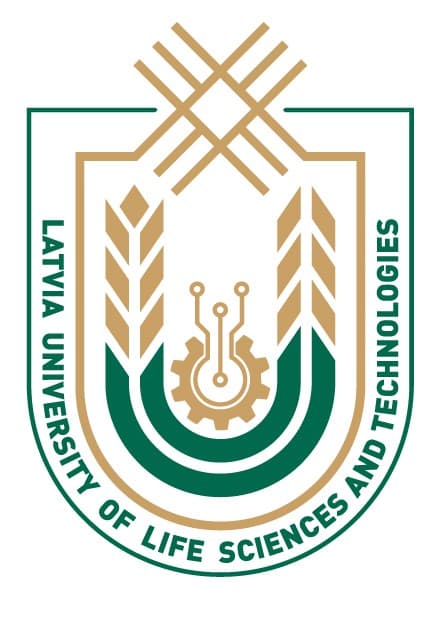References
- Aydin, I. and Colakoglu, G. (2008). Variations in bending strength and modulus of elasticity of spruce and alder plywood after steaming and high temperature drying. Mechanics of Advanced Materials and Structures. Volume 15, Issue 5, 371–374. DOI: 10.1080/1537649080197769210.1080/15376490801977692
- Bekhta, P. and Marutzky, R. (2007). Reduction of glue consumption in the plywood production by using previously compressed veneer. European Journal of Wood and Wood Products. 65(1):87-88. DOI: 10.1007/s00107-006-0142-810.1007/s00107-006-0142-8
- Bekhta, P., Proszyk, S., Krystofiak, T., Mamonova, M., Pinkowski, G. and Lis, B. (2014). Effect of thermomechanical densification on surface roughness of wood veneers. Wood Material Science and Engineering 9, 233–245. DOI: 10.1080/17480272.2014.92304210.1080/17480272.2014.923042
- Cristescu, C., Sandberg, D., Ekevad, M. and Karlsson, O. (2015). Influence of pressing parameters on mechanical and physical properties of self-bonded laminated beech boards. Wood Material Science and Engineering 10, 205–214. DOI: 10.1080/17480272.2014.99970310.1080/17480272.2014.999703
- Finnish forest industries federation. (2002). Handbook of Finnish Plywood. Lahti, Finland, Kirjapaino Markprint Oy., 68 pp.
- Forest-based Sector Technology Platform (2013). Horizons - Vision 2030 for the European Forest-based Sector Renewed FTP Vision 2030. Brussels, Belgium, 12 pp.
- Iejavs, J., Podnieks, M. and Uzuls, A. (2021). Some physical and mechanical properties of wood of Fast-growing tree species eucalyptus (Eucalyptus grandis) and radiata pine (Pinus radiata D.Don). Agronomy Research 19(2), 434–443. DOI: 10.15159/AR.21.038
- Kallakas, H., Rohumaa, A., Vahermets, H. and Kers, K. (2020). Effect of Different Hardwood Species and Lay-Up Schemes on the Mechanical Properties of Plywood. Forests, 11, 649, DOI: 10.3390/f1106064910.3390/f11060649
- Kinderevičs, K. (2019). The quality of the bonding of Birch plywood, depending on the changes in the technological regimes. Master Thesis. Latvia University of Life Sciences and Technologies, Jelgava, 83 pp.
- Kretschmann, D. E. and Cramer, S. M. (2007). The role of earlywood and latewood properties on dimensional stability of loblolly pine. Proceedings of the Compromised Wood Workshop, Wood Technology Research Centre, University of Canterbury, 215-236.
- Kretschmann, D. E. (2008). The influence of juvenile wood content on shear parallel, compression, and tension perpendicular to grain strength and mode I fracture toughness of loblolly pine at various ring orientation. Forest Products Journal. VOL. 58, No. 7/8, 89-96.
- Latvijas Finieris. (2020). Plywood handbook. Riga, Latvijas Finieris JSC, 106 pp.
- Li, H., Li, C., Chen, H., Zhang, D., Zhang, S. and Li, J. (2014). Effects of Hot-Pressing Parameters on Shear Strength of Plywood Bonded with Modified Soy Protein Adhesives. Bioresources, 9(4), 5858-5870, DOI: 10.15376/biores.9.4.5858-587010.15376/biores.9.4.5858-5870
- Liepa, K. H. (2020). Influence of plywood pressing technological parameters on mechanical properties in static bending. Master Thesis. Latvia University of Life Sciences and Technologies, Jelgava, 70 pp.
- Lipinskis, I., Spulle, U. (2011). Research on mechanical properties of birch plywood with special veneer lay-up schemes. Drewno, Vol. 54, No 185, 109–118.
- Ministry of Agriculture Republic of Latvia (2021). Latvian Forest Sector in Facts & Figures 2021. Riga, NGO “Zaļās mājas”, 54 pp.
- Mirski, R., Dziurka, D., and Łęcka, J. (2010). Potential of shortening pressing time or reducing pressing temperature for plywood resinated with PF resin modified using alcohols and esters. European Journal of Wood and Wood Products 69, 2, 317-323. DOI: 10.1007/s00107-010-0436-810.1007/s00107-010-0436-8
- Nawrot, M., Pazdrowski, W., Szymański, M., Jędraszak, A. (2012). Identification of juvenile and mature wood zones in stems of European larch (Larix Decidua Mill.) using a k-means algorithm. Wood Research 57 (4), 545–560.
- Popovska Jakimovska, V., Iliev, B., Zlateski, G. (2017). Impact of veneer layouts on plywood tensile strength. Drvna industrija 68(2), 153-161. DOI: 10.5552/DRIND.2017.163410.5552/drind.2017.1634
- Rautkari, L., Kutnar, A., Hughes, M. and Kamke, F.A. (2015). Wood Surface Densification Using Different Methods. In Proceedings of the 11th World Conference on Timber Engineering, 3121–3125.
- Regattieri, A. and Bellomi, G. (2009). Innovative lay-up system in plywood manufacturing process. European Journal of Wood and Wood Products, European Journal of Wood and Wood Products No. 67, 55–62. DOI: 10.1007/s00107-008-0282-010.1007/s00107-008-0282-0
- Shupe, T. F., Hse, C. Y., Grozdits, G. A. and Choong, E. T. (1997). Veneer Lay Up on Some Mechanical Properties of Loblolly Pine Plywood. Forest Products Journal. Vol. 47, No. 10, 101–106.
- Spulle, U. (2003). Bending Strength and Modulus of Elasticity of the Plywood. Master Thesis, Latvia University of Agriculture, Jelgava, 72 pp.
- Spulle, U., Buksans, E., Iejavs, J. and Rozins, R. (2018). Swelling Pressure and Form Stability of Cellular Wood Material. Agronomy Research 16(1), 263-275. DOI: 10.15159/AR.18.011
- Standards Association of Latvia. (2001). European standard: Wood-based panels - determination of modulus of elasticity in bending and of bending strength. LVS EN 310. Riga.
- Standards Association of Latvia. (2005). European standard: Plywood - Bonding quality - Part 1: Test methods. LVS EN 314-1. Riga.
- Standards Association of Latvia. (2000). European standard: Plywood - Bonding quality - Part 2: Requirements. LVS EN 314-2. Riga.
- Standards Association of Latvia. (2000). European standard: Plywood - Tolerances for dimensions. LVS EN 315. Riga.
- Standards Association of Latvia. (1999). European standard: Wood-based panels - Determination of moisture content. LVS EN 322. Riga.
- Standards Association of Latvia. (2000). European standard: Wood-based panels - Determination of density. LVS EN 323. Riga.
- Thoemen, H., Irle M. and Sernek M. (2010). Wood-Based Panels: An Introduction for Specialists. Brunel University Press, 152 pp.
- Volynskii, В.Н. Tehnologia kleenyh materialov. (Technology of Glued Materials.), Arhangelxskii gosudarstvennyi tehniceskii universitet, Arhangelxsk, 2003. 280 с. (in Russian)
- Wang, B. J. and Dai, C. (2005). Hot-pressing stress graded aspen veneer for laminated veneer lumber (LVL). Holzforschung. Volume: 59, Issue 1, 10–17.10.1515/HF.2005.002
- Zeppenfeld, G., Grunwald, D. (2005). Klebstoffe in der Holzund Möbelindustrie; 2. überarbeitete und erweiterte Auflage. KG, Leinfelden-Echterdingen, DRW-Verlag Weinbrenner GmbH & Co. 352 pp.
